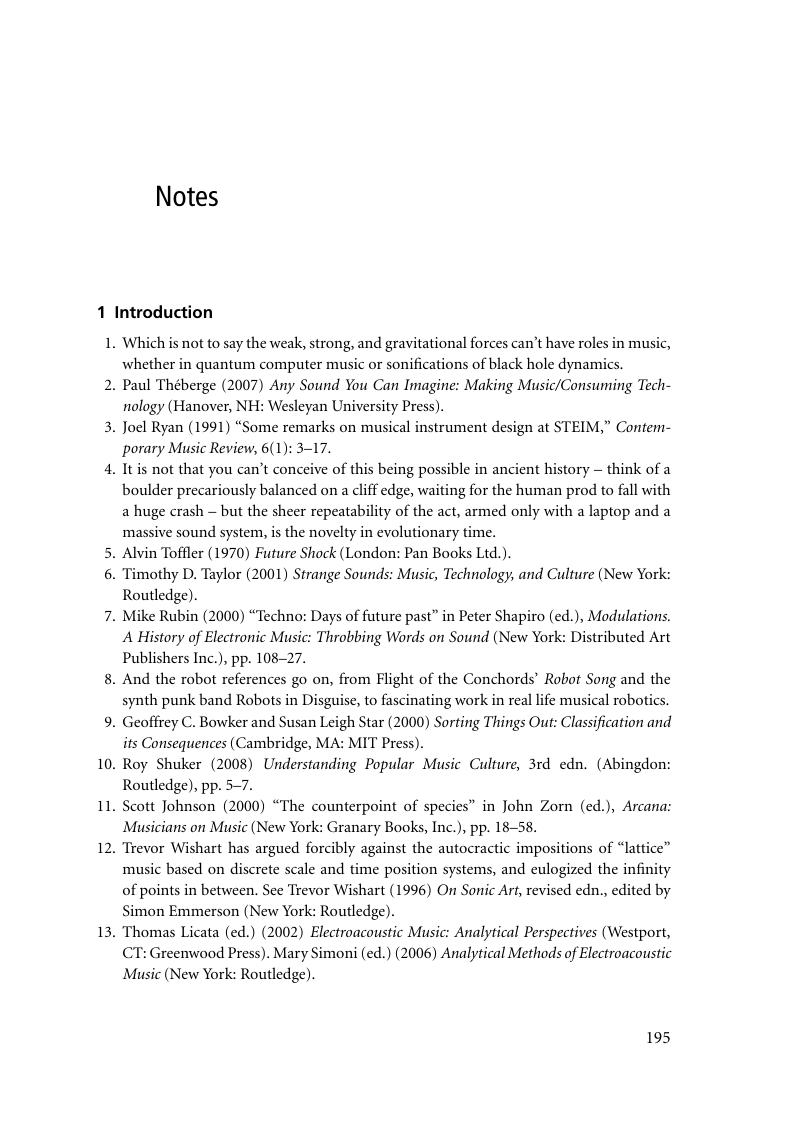Book contents
- Frontmatter
- Contents
- List of illustrations
- List of Tables
- Acknowledgments
- Chapter 1 Introduction
- Chapter 2 Recording technologies and music
- Chapter 3 New sounds and new instruments: Electronic music up until 1948
- Chapter 4 The post-war sonic boom
- Chapter 5 From analog to digital
- Chapter 6 Into the mainstream
- Chapter 7 Synth pop
- Chapter 8 Electronic dance music
- Chapter 9 Continuing the classical?
- Chapter 10 Experimental electronica
- Chapter 11 Sound art
- Chapter 12 Further connections
- Chapter 13 Live electronic music
- Chapter 14 Conclusions
- Notes
- Index
- References
Notes
Published online by Cambridge University Press: 05 May 2013
- Frontmatter
- Contents
- List of illustrations
- List of Tables
- Acknowledgments
- Chapter 1 Introduction
- Chapter 2 Recording technologies and music
- Chapter 3 New sounds and new instruments: Electronic music up until 1948
- Chapter 4 The post-war sonic boom
- Chapter 5 From analog to digital
- Chapter 6 Into the mainstream
- Chapter 7 Synth pop
- Chapter 8 Electronic dance music
- Chapter 9 Continuing the classical?
- Chapter 10 Experimental electronica
- Chapter 11 Sound art
- Chapter 12 Further connections
- Chapter 13 Live electronic music
- Chapter 14 Conclusions
- Notes
- Index
- References
Summary

Information
- Type
- Chapter
- Information
- Electronic Music , pp. 195 - 223Publisher: Cambridge University PressPrint publication year: 2013
